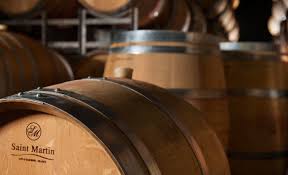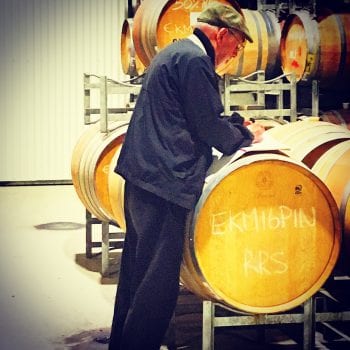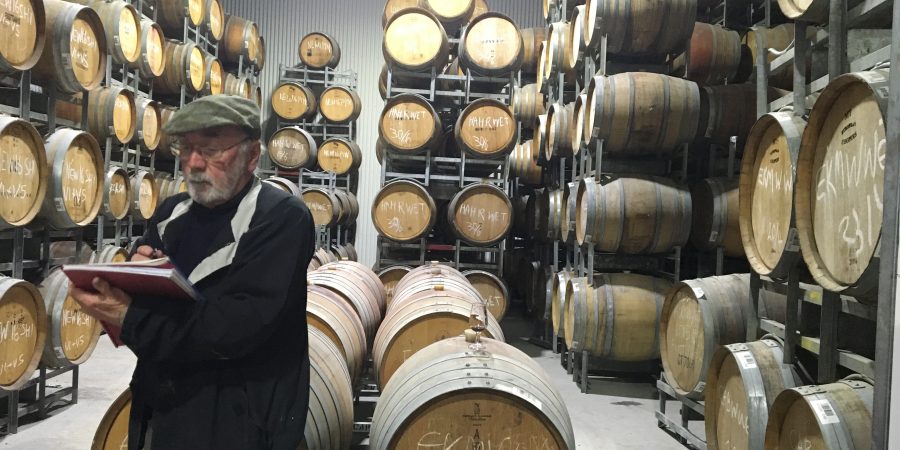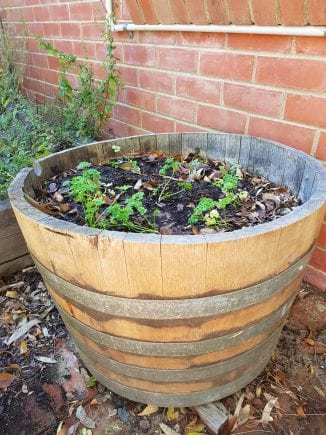 Contrary to popular belief, it turns out Rob really isn’t as patient as we thought he was.
Contrary to popular belief, it turns out Rob really isn’t as patient as we thought he was.
He couldn’t wait for the man in the red suit to bring him presents so he decided to buy his own…
…some brand new barrels!
While the grapes are doing their thing (more on this next week), Rob is busy getting organised for his part in the process. And making sure he has some nice barrels to tuck his 2019 babies into when they’re ready is just one of the things on his to-do list.
So, this week, I decided to throw a few barrel-related questions his way…
Other than provide a nice spicy characters, what’s the point of putting wine in expensive barrels?

We use barrels for two reasons…
1. To encourage the development of all those lovely aromas and flavours that only come from ageing the wine. The flavours develop due to tiny amounts of oxygen penetrating through the barrel staves (the individual pieces of the barrel). Barrels allow just enough oxygen in without the risk of oxidising the wine.
and
2. To provide some of those desirable oak aromas and flavours. If done well, the oak can add complexity and interest, without dwarfing fruit characters.
When a barrel is used for the first time, it will impart very noticeable oaky aromas (think vanilla, coconut, spice, toasty notes, etc.). When the barrels are used year after year, the amount of oaky flavours being contributed to the wine is reduced. After about 5 years of use, just about all the oak flavours have been extracted.
This doesn’t mean the barrel is useless. It’s still good for reason number 1!
It’s worth noting that the pricier barrels are usually the best, and deliver refined elegant oak flavours.
Does it get oakier the longer it stays there?
Up to a point it does get oakier. I’ve found though that the oak flavours reach a balance. There becomes a nice balance between the obvious oak and the developing fruit flavours.
What is the difference between French and American oak?
To generalise, French oak seems spicier, maybe more elegant.
American oak often seems a little strident. It has strong coconut aromas and not as much spice. American is great with the very big rich firm wines. Being an ex-Penfold winemaker, I still think there’s a place for good American oak.
Are there any other types?
We used to import barrels from Hungary and they were really nice barrels, very similar to the French.
And I’ve just bought a Slovakian barrel. I expect it also to be more akin to the French than American.
What are the positives and negatives of French and American oak for use in Somerled wines?
For our big rich Shiraz, I sometimes buy an American oak barrel or two. For the other wines in our stable, I use 100% French. One can see the benefits of French very clearly in our 2018 Pinot Noir dry red. Those lovely spicey notes are very complimentary.
How many vintages can you use a barrel for?
We have used individual barrels for as long as 10 years. Although, I like to move them on after about 7-8.
 Then what happens to it?
Then what happens to it?
Others could use the oldies if they have a need, but generally, they are cut in half and used for flower pots.
Why are different brands so different?
Some brands seem to supply barrels that are more consistently high quality, but just about all the barrels that are imported are pretty good. Differences are not huge. I prefer barrels that are made from hard, fine-grained timber as these release their flavours more slowly and over a longer period. That makes it easier to control how a wine is maturing.
What is toastiness, seasoning and so on?
When a barrel is being made, the timber staves obviously need to be bent. The way to do this is to heat the staves with a brazier. The staves get so hot, they start to go brown and this is akin to caramelisation. The cooper (barrel maker) can control the length of time the staves are heated, and can control the intensity of the fire. According to the winemakers’ requirements, the cooper can produce heavily toasted barrels, medium toast or light toast. Each of these has a different effect on the taste of the wine. Generally, the bigger the wine, the more toasting the wine can take. So when we taste a wine that is “toasty’, it usually means the barrels used were heavy toast. We use mainly medium toast levels on our barrels.
Thanks Rob!
Loving our blog? Sign up for weekly updates straight to your inbox here.
Tune in next week for our next growing season update…

 Then what happens to it?
Then what happens to it?